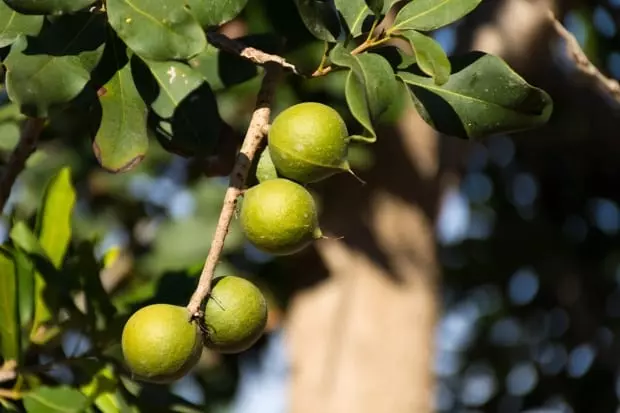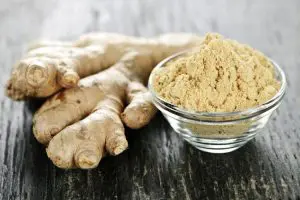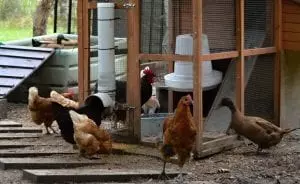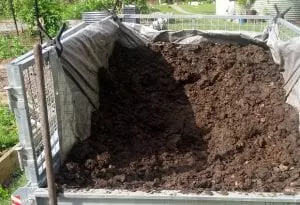Often the plants that grow the best are the ones totally adapted to the area they are growing in and whilst most examples in the home garden are ornamentals here are some examples of edible plants that are native to Australia.
Macadamia
Everyone worldwide knows about the Macadamia nut, but most don’t know it’s a rain forest tree that originated from the mid-north coast of central-eastern Australia.
A plant scientist from the USA saw the tree while on holidays in Australia and felt he could breed it into a decent sized nut and breed out much of its insect and disease issues. This he achieved in Hawaii where the tree was commercialised with great success. Hence most people think it is a Hawaiian tree.
Then another Aussie plant scientist breeder saw the tree growing in Hawaii and thought he could make it even better, so he managed to get genetic material off the Hawaiian people and worked on it back in Australia to make the nut what it is today. Without a doubt, it would be Australia’s biggest exported food crop. Not in tonnage of nutmeat, but in genetic material.

The tree grows to around 7m tall over time although those grafted for backyard use are now grafted onto dwarfing rootstock. It will grow in pretty much any decent soil in most regions that don’t suffer bad drought or too many frosts or any snow. It does have insect issues and disease issues in the form of fungal or bacterial susceptibilities particularly when planted in its home range in Australia where its the natural vector of several pests and diseases.
The nut is eaten raw or roasted with or without additional spice seasoning. It also produces a wonderful oil for use in salads or cooking.
Macadamia plants can be purchased at any good fruit tree nursery.
Bunya Nut
Those of us in Australia will be familiar with the huge spiky Jurassic era pine tree called the Bunya Pine. It is a remnant species left over from the Gondwana landmass and has cousins in Africa, New Zealand, South America and in Australia (The Wollemi Pine). The nut comes in a cone that can weigh 10kg, grow far bigger than a ten pin bowling ball and falls all the way from the very top of the tree which is why you never stand under a bunya tree in late summer or early autumn!

The tree will easily achieve 20m tall and regularly tops out at 30-50m. Its range extends the whole way up the east coast of Australia in both lowland and highland areas.
It likes a good drop of rain and lives in rainforest, open woodlands and plains. It’s not the very best tree to plant in a backyard due to its size and spiky nature but as long as you have more than half an acre, planting one away from the inhabited areas will produce a handsome, if spiky tree. They live several hundreds of years but aren’t mature for fruiting until around 8-9yrs old. Once the tree gets its second top it is mature. Cones take two years to develop.
The nut can be eaten raw although it can be a bit chalky. Best to cook the nut to bring out its lovely creamy texture full of protein by boiling, baking, roasting in the coals of the fire, or using in place of potato in stews and casseroles. The tree also yields a beautiful hard timber suitable for floors or furniture or for sound instruments.

Finger Lime
Finger Limes are prized for their caviar-like lemony pearl jewels of pulp in a colour range from pale pink to clear. The very spiky unfriendly trees reaching 6m tall, grow in native subtropical forests and mountain regions. They need to be protected from frost. The fruit skin colour varies from pale green through yellow to dark red or purple and doesn’t ripen further once picked. It will detach easily from the tree once ripe with just a small tug.
Treat it just like any other citrus. Finger Limes are sold in most retail plant nurseries these days along with all the other varieties of limes, most of which also come from Australia.
Rosella
It’s thought that Rosellas came to Australia thousands of years ago with Malaccan fishermen who used the fruit as a treatment for the ‘sea disease’ (scurvy). However once landing here, the Rosella changed markedly in genetic structure to become a different plant and therefore considered a native of Australia. The deep redpointed fruit (the calyx of the flower) has a very high Vitamin C content.

The tropical bush grows to 1.5m tall and wide with dark olive green tri-lobed leaves set in pairs along the branches. Being a member of the hibiscus family it has pale to rose pink single hibiscus-like flowers about 4-7cm across. The shapely bush grows its red spotted branches like canes with the flowers and leaves evenly spaced all the way to the bushy tops. The leaf stems are often red extending the colour into the veins of the leaves.
The fruit is the seed pod of the flower with 5-6 bract-like fleshy segments around a fingernail width seed pod inside. Both the bracts and the seed pod are used to make jam. The bracts are boiled while the seed pods are contained within the cheesecloth bag for the purposes of providing the necessary pectin to set the jam naturally. The leaves may be lightly steamed or blanched for use with meats. Rosellas are available worldwide as seed and in Australia as potted plants at most plant nurseries.
Samphire
Is a low growing tidal and beach zone plant also called sea asparagus. The plant is made up of many 200-500mm tall leafless segmented salty tasting stems. It grows mostly in sand and the stems are pale green in summer and pale pink in winter. It can be eaten raw, sauteed or lightly blanched and used as a sharp salty burst of flavour for many dishes. Restaurants use it mostly although it is making its way into mainstream home cooking.

Mountain Pepper
Is a tall evergreen shrub with red stems and lanceolate olive green leaves. It will reach 8m in a temperate forest but only 5m in a backyard or pruned as an ornamental or grown in a hedge. It thrives best in cool climates, with acid and well-drained soils in partial shade. In spring-summer, it produces off-white to yellow tiny flowers that produce red to dark purple twin-lobed tiny fruits that eventually dry black, hard and shrivelled.
The fruits are harvested between March and May either green or almost fully black, then dried and crushed or ground and used as a very potent yet fragrant pepper. The leaves may also be used fresh or dried and ground. Mountain Pepper might be difficult to find outside of bush tucker outlets but the pepper itself is available in good Delis and organic supermarkets that carry Aussie native foods around the country.

Image from Australian Super Foods
There is also another pepper called Wild Tasmanian Black Pepper which is a different plant with different characteristics but also available at bush tucker plant nurseries.
Midyim Berry
Grows 1-1.5m tall and wide in sandy scrub and coastal heath soils and in open forests of Queensland. Sweet to lemonade flavoured succulent white 2cm wide berries with purple speckles are produced in profusion in late summer to autumn. The tiny new leaves are burgundy-bronze coloured fading to dark green making the plant very attractive for house gardens once it starts fruiting. The fruit is eaten raw or made into jams or sauces. Midyim berry is usually purchased from Bush Tucker nurseries but is finding its way into larger retail outlets.
Lemon Aspen
Is a rainforest citrus species from Northern Queensland’s prehistoric forests. The fruit is small pale lemon coloured and flavoured somewhere between a lime and a grapefruit. The 4cm wide fleshy fruit is used in biscuits, jams, meats, desserts, sauces. The trees can grow to 12-15m tall in forests but only attain a much shorter and more bushy habit in a garden with 250mm long citrus-like bright green shiny leaves. It can be grown in a pot to keep it short as an ornamental. The fruit appears in Autumn and winter. Mostly available through bush ticker outlets.
Lilly Pilly
is a rain forest tree growing to 7m and producing 25mm wide reddish-pink berries in pendulous clusters following white flowers. It prefers rich soil and good water supply in subtropical conditions. The tree can be made into a bonsai or pruned to keep it small for backyard growing. It will still produce a large amount of fruit. The berries can be eaten raw or made into jam or sauce. Various forms of Syzygium are available in every retail plant nursery.

Saltbush
Also known as Old Man Saltbush, it is a pale grey dryish looking wide-spreading dense drought-tolerant bush that usually matures about 2-3metre tall. In a greenhouse situation, it will be far more fleshy. The leaves are reminiscent of holly leaves in shape. The leaves are used dried as a herb, wrapped around meats, youngest leaves can be added raw to salads or older leaves can be added into stews or casseroles or blanched or sauteed and added to other vegetables for the salty flavour.
Saltbush is mostly available through bush tucker outlets or bigger retail nurseries. Often sold as an ornamental for native or drought-tolerant gardens.
Warrigal Greens
Also known as (Native Spinach), this fleshy short vine with heart-shaped bright green leaves has tiny yellow flowers set deep in the leaf nodes in spring/summer. Must be heated, blanched, or steamed to remove the oxalates before eating. Keep vine shortened to about 200cm long to produce a continuous stream of fresh leaves. This succulent prefers a neutral pH, moist soil, but will live in almost any soil as long as there is moisture.

Warrigal greens can be lightly blanched in boiling salted water then revived in iced water for use in salads or left hot for addition to stews and casseroles. Warrigal Greens is easily available in most retail plant outlets.
Purslane
There are various purslanes in Australia and the world. Those in Australia live in both the tidal zone and inland areas of the country. It usually has a reddish-purple stem with olive green fleshy leaves in pairs. The low maintenance succulent sprawls to around 1metre wide. Some varieties have small fingernail-sized ovate (oval-shaped) leaves while others have 3-4cm lanceolate (long thin) leaves. The flowers are profuse and on the wild varieties generally yellow.

Purslane can be eaten raw in salads or blanched. It has a slightly salty and acid flavour that goes well with seafood and chicken as well as salads. This plant might be hard to find outside bush tucker suppliers but it grows everywhere as a weed and in most gardens across the country.
Native Violet
This little Aussie native ground cover is a relative of the Pansy family being Viola Hederacea. The flowers have white petals and lilac centres with bright green heart-shaped to round leaves. The flowers are used as an edible garnish to many cold dishes. It grows by underground runners, able to tolerate quite dry conditions but loving moist friable soil where it spreads low and wide sending it’s welcoming flowers high above the leaves. Even if it dies down due to drought or extra cold conditions, it comes back once the season is better.
Noni Fruit
This one really had me confused because I was sure it was not an Aussie native. However, like many tropical fruits, it is a native of the South Pacific Islands including parts of Northern Australia! Who’d have thought? Where has it been all our lives?
Like the Macadamia, it’s been off holidaying and making a grand living in every other tropical country!

Apparently some tribes of Australian Indigenous people knew it well and even traded its bark which made a dark brown dye used for Batik and bark paintings.
Being a member of the citrus family, the fruit is lemony, tangy, not very sweet (although plant scientists are trying to change that). But it holds amazing anti-oxidant qualities as well as internal health benefits.

Mushrooms
Like every other country in the world, Australia has its very own native mushrooms. However since mushrooms are so hard to positively identify and since failure to do so can be fatal, here are links to various groups and sites that I use for Id’ing shrooms.
These two Facebook groups can help you with that task.
Australian Wild Mushroom Hunters
Blogs on native edibles to check out:-
https://mushroaming.wordpress.com/ on Australian Edible Mushrooms;
This site is the 1Million Women blog:-
https://www.1millionwomen.com.au/blog/mushroom-madness-your-guide-foraging-edible-fungi/
This site is run by agricultural dept:-
http://www.agpath.com.au/wp/wp-content/uploads/2014/04/Permiculture-Baw-Baw-March-1st-2012.pdf
And these are pages from the All Creatures site.
https://allcreativedesigns.com.au/pages/gallfungi.html
If you know of any other Aussie natives that have made their way into food gardens worldwide, please tell us below.













